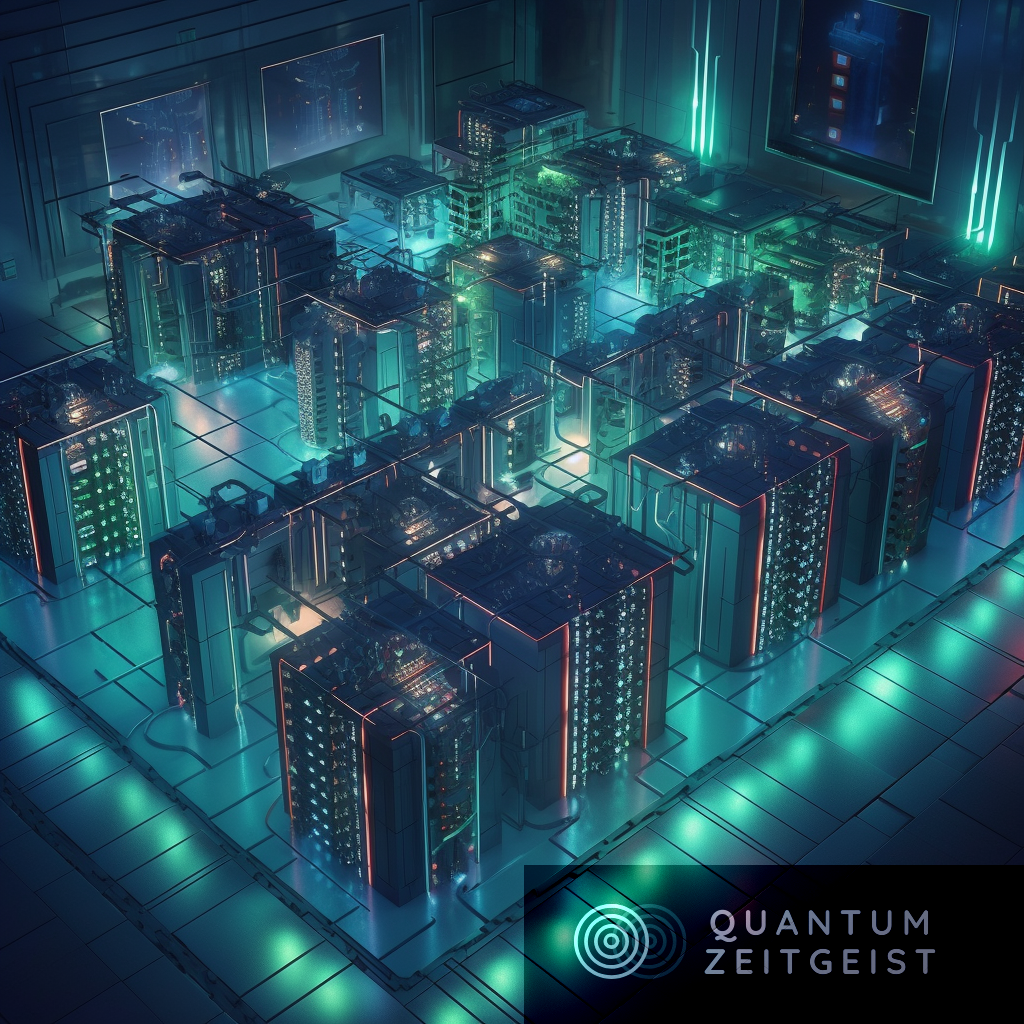Researchers have developed a novel fault-tolerant quantum computing architecture that could significantly reduce the resources needed to break commonly-used cryptographic systems. The active-volume architecture uses photonic components to reduce costs in quantum arithmetic, which is essential for cryptographic applications. The researchers found that small adjustments to existing elliptic curve cryptography (ECC) quantum algorithms could reduce the number of gates required for breaking ECC by up to 80%. Despite these breakthroughs, cracking 256-bit ECC keys still requires a quantum computer with millions of physical qubits, much larger than the first generation of useful, fault-tolerant quantum computers.
Researchers at PsiQuantum have developed a quantum computing architecture that could crack elliptic curve cryptography (ECC) keys up to 700 times faster than current methods. The team made minor adjustments to existing ECC quantum algorithms, reducing the required quantum gates by up to 80%. The new active-volume architecture leverages non-local connections from photonic components to reduce costs in quantum arithmetic needed for cryptographic applications. Despite the breakthrough, cracking 256-bit ECC keys still requires a quantum computer with millions of physical qubits, much larger than the first generation of fault-tolerant quantum computers.
Quantum Computers and Cryptography
Quantum computers have the potential to crack cryptographic systems that are currently used to secure digital communications. Public-key cryptographic systems, such as RSA and elliptic curve cryptography (ECC), rely on mathematical operations that are easy to apply for encoding but difficult to reverse for decoding. The difficulty of decoding these operations makes them secure, as it would take conventional computers an impractical amount of time to reverse the process.
However, quantum computers can efficiently reverse the mathematical operations at the heart of RSA and ECC, making them vulnerable to being broken. Breaking 256-bit ECC keys is easier than breaking 2048-bit RSA keys because shorter keys require fewer resource-intensive arithmetic operations.
Improving Quantum Algorithms for ECC
Researchers have found ways to improve existing ECC quantum algorithms, reducing the number of gates required for breaking ECC by up to 80%. This is achieved through two main modifications:
- Reusing the prepared state from the first half of the quantum algorithm for cracking ECC, which results in up to a 50% reduction in the number of quantum operations needed per key.
- Applying a known trick in the literature that allows for performing multiple modular multiplicative inversions for the price of one, providing an additional cost reduction of up to 60% per key cracked by the quantum algorithm.
Active Volume Architecture
A novel fault-tolerant quantum computing architecture called active volume architecture has been introduced, which leverages the unique non-local connections available from photonic components to reduce costs in quantum arithmetic needed for cryptographic applications substantially.
This architecture requires a different perspective on resources, deconstructing algorithms into larger subroutines with associated costs to determine the overall cost of the algorithm. The non-local connections leveraged in active volume architectures significantly reduce the number of quantum operations needed to crack an ECC key by a factor ranging between 300-700.
The Future of Cryptography and Quantum Computing
Cracking 256-bit ECC keys still requires a quantum computer with millions of physical qubits, much larger than the first generation of useful, fault-tolerant quantum computers. However, researchers are preparing for this eventuality by developing post-quantum cryptography schemes such as lattice cryptography and recommending longer RSA or ECC keys.
These approaches are suspected to be secure against quantum algorithms, and other developing quantum technologies can offer encryption schemes that are provably secure against quantum algorithms.
Responsible Deployment of Quantum Computing
Quantum computing is a powerful technology with the potential to easily break the cryptographic systems we rely on every day. Companies and organizations developing quantum computers carry a serious responsibility to ensure that quantum computing is deployed in a responsible and appropriately transparent way. This is why researchers are choosing to publish their methods in the public domain, allowing for further development and scrutiny of these powerful technologies.
“Quantum computing is a powerful technology, and it is striking to realize that quantum computers will be able to easily break the cryptographic systems which we rely on every day.”
Summary
Researchers have developed a novel fault-tolerant quantum computing architecture that significantly reduces the resources needed to break elliptic curve cryptography (ECC) keys, making it easier for quantum computers to crack cryptographic systems. However, cracking 256-bit ECC keys still requires a quantum computer with millions of physical qubits, much larger than the first generation of useful, fault-tolerant quantum computers.
- Researchers have estimated the scale of quantum computers needed to break a commonly-used cryptosystem, considering a novel fault-tolerant quantum computing architecture.
- Secure digital communications rely on the success of public-key cryptographic systems, such as RSA and elliptic curve cryptography (ECC).
- Both RSA and ECC keys are susceptible to being broken by quantum computers, which can efficiently reverse the mathematical operations at the heart of these systems.
- The researchers found that small adjustments to existing ECC quantum algorithms can significantly reduce the number of gates required for breaking ECC by up to 80%.
- The active volume architecture used in the study led to a remarkable reduction in the number of quantum operations needed to crack an ECC key by a factor ranging between 300-700.
- Cracking 256-bit ECC keys still requires a quantum computer with millions of physical qubits, which is much larger than the first generation of useful, fault-tolerant quantum computers.
- Researchers are preparing for the eventuality of quantum computers breaking cryptographic systems by developing post-quantum cryptography schemes and recommending the use of longer RSA or ECC keys.
- Quantum computing is a powerful technology with high potential impact, and companies and organizations developing quantum computers have a responsibility to ensure their responsible and transparent deployment.
Read the publication here.

